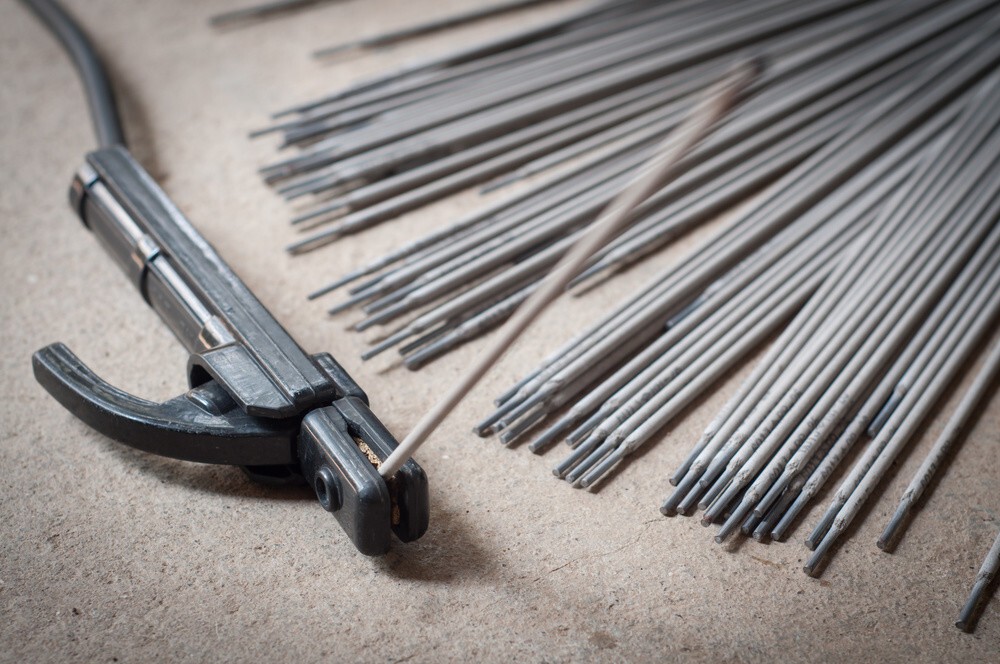As we already know that, there are many different types of welding processes and techniques being used for diverse purposes.
No matter which method of welding process you use, there is something that is used in all processes, and that is a welding rod.
A welding rod is an essential component to perform any type of welding process. The welding rod is often known as the electrodes or the filler material.
Generally, there are two types of welding rods or electrodes. One is known as the consumable electrode, and the other is known as the non-consumable electrode.
Consumable electrode, as the name defines, are the one, which melts itself in order to weld the metal pieces together. While on the other hand, non-consumable electrodes are the one that does not consumes or melt itself to weld metal.

The welding rods are further divided into several types and based on factors such as base metal properties, thickness, position, and environmental conditions, they are being used for specific purposes.
The most well-known and commonly used welding rod types are 6011 and 6013.
This article will help you in differentiating in between welding rod 6011 and welding rod 6013 clearly.
Table of Contents
The general idea of welding rod 6011
6011 rod is one of the most common rods you will found as it can be used for general repairing work and fabrication.
Despite of the welder position and other welding setups, welding rod 6011 is used primarily where deep penetration is required. Mainly, these rods are used by pipefitters and boilermakers.
You can use it to weld rusted or painted metals as well. 6011 rod can be used in both vertical and horizontal positions.
As far as polarity is concerned, 6011 has the capability to be run on AC and as well as on DC polarity.
Above all, you do not need any special treatment for storing the 6011 welding rod, it can be stored at room temperature, and it will not be affected in any way; you can carry or use it whenever you want.
One noticeable downside of using the 6011 welding rod is that it produces rough beads. Besides that, 6011-rod are not preferred to be used for stainless steel or non-ferrous metals.
One of the important factors in determining the quality of a rod is by checking its tensile strength. Tensile strength is the measurement of strength or forces a material can withhold without breaking.
The tensile strength of a welding rod is shown by the first two digits of a code. In the case of the 6011 welding rod, the tensile strength of this rod is said to be 60,000 psi.
The general idea of welding rod 6013
The 6013 welding rod is also used for general purposes. Typically, it is made of mild steel and is used primarily where medium-level penetration is required.
From general fabrication work to shipbuilding, 6013 electrodes are used widely for many different purposes.
Same as 6011, 6013 welding rod can also be used on AC and DC current source and can be used in all positions.
One main advantage of it is that it gives you smooth operation, optimum performance, and produces minimal beads.
When we talk about the tensile strength, as we know that it is determined by the first two digits, in the case of the 6013 welding rod, the tensile strength of this rod is the same as of the 6011 welding rod, i.e., 60,000 psi.
Summary
Based on the information provides, it can be said that 6011 and 6013 welding rod perfect in their own capabilities and plays a vital role in overall quality and reliability of welding materials.
The use of these electrodes is based on their properties.
Polarity and tensile strength of 6011 and 6013 welding rods are identical, however, as mentioned here, the 6011 welding rod offers deep penetration and is good to be used on rusty metals or lubricious surfaces, and when deep penetration is not required, 6013 rod is more suitable.
It is clear from the description that what are the major differences between 6011 and 6013 welding rods and which welding rod you should use depends on the needs and requirements of the particular welding project.
Frequently Asked Questions
Can you weld cast iron with 6011 rods?
Yes, 6011 welding rod can weld cast iron.
What are the most common electrodes?
There are hundreds of electrodes available in the market; however, according to the American Welding Society (AWS), the most common electrodes include E6011, E6013, E7014, E7024, and E7018 welding rods.
What do numbers represent in welding rods?
The first two digits of a number in a welding rod tell you about the tensile strength of a rod. It is specified in thousands. For example, the 6011 welding rod has a tensile strength of 60,000 psi.
The third digit indicates the position in which a rod is best suited for. For example, the 6011 welding rod has a third digit, “1”; if it is 1, it means that it can be used in all positions.
While, on the other hand, if the third digit is “2”, it means that it is only fit for flat welds.
The last two digits combine tells you about the type of flux coating a rod has on it. A flux coating is something, which tells you that what kind of current can be used with this specific rod. If the last two digits are “11”, it certifies that this welding rod can be used for any type of current.
The letter E with the number stands for electrodes.
In order to get the perfect welding experience, this should must match with the current you are supplying during the welding process.
How do I choose a welding rod?
Available power source, position, and base metal properties are the main factors you need to see when choosing an electrode for your welding project.
